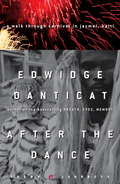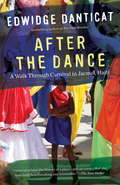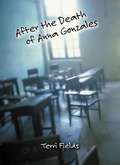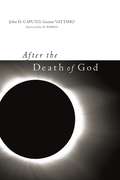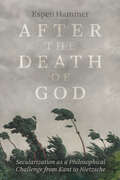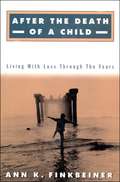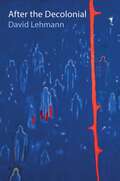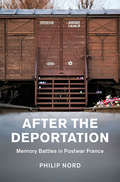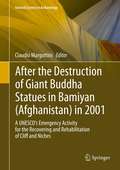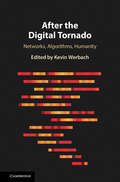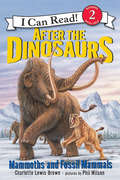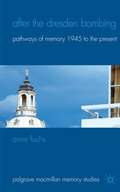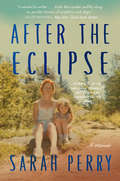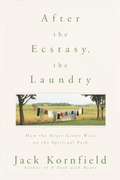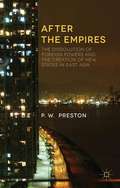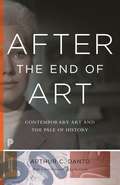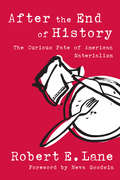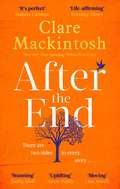- Table View
- List View
After the Dance
by Edwidge DanticatInAfter the Dance, one of Haiti’s most renowned daughters returns to her homeland, taking readers on a stunning, exquisitely rendered journey beyond the hedonistic surface of Carnival and into its deep heart. Edwidge Danticat had long been scared off from Carnival by a loved one, who spun tales of people dislocating hips from gyrating with too much abandon, losing their voices from singing too loudly, going deaf from the clamor of immense speakers, and being punched, stabbed, pummeled, or fondled by other lustful revelers. Now an adult, she resolves to return and exorcise her Carnival demons. She spends the week before Carnival in the area around Jacmel, exploring the rolling hills and lush forests and meeting the people who live and die in them. During her journeys she traces the heroic and tragic history of the island, from French colonists and Haitian revolutionaries to American invaders and home-grown dictators. Danticat also introduces us to many of the performers, artists, and organizers who re-create the myths and legends that bring the Carnival festivities to life. When Carnival arrives, we watch as she goes from observer to participant and finally loses herself in the overwhelming embrace of the crowd. Part travelogue, part memoir, this is a lyrical narrative of a writer rediscovering her country along with a part of herself. It’s also a wonderful introduction to Haiti’s southern coast and to the true beauty of Carnival.
After the Dance: A Walk Through Carnival in Jacmel, Haiti (Updated) (Vintage Departures)
by Edwidge DanticatIn After the Dance, one of Haiti's most renowned daughters returns to her homeland, taking readers on a stunning, exquisitely rendered journey beyond the hedonistic surface of Carnival and into its deep heart.Edwidge Danticat had long been scared off from Carnival by a loved one, who spun tales of people dislocating hips from gyrating with too much abandon, losing their voices from singing too loudly, going deaf from the clamor of immense speakers, and being punched, stabbed, pummeled, or fondled by other lustful revelers. Now an adult, she resolves to return and exorcise her Carnival demons. She spends the week before Carnival in the area around Jacmel, exploring the rolling hills and lush forests and meeting the people who live and die in them. During her journeys she traces the heroic and tragic history of the island, from French colonists and Haitian revolutionaries to American invaders and home-grown dictators. Danticat also introduces us to many of the performers, artists, and organizers who re-create the myths and legends that bring the Carnival festivities to life. When Carnival arrives, we watch as she goes from observer to participant and finally loses herself in the overwhelming embrace of the crowd.Part travelogue, part memoir, this is a lyrical narrative of a writer rediscovering her country along with a part of herself. It's also a wonderful introduction to Haiti's southern coast and to the true beauty of Carnival.
After the Darkest Hour: How Suffering Begins the Journey to Wisdom
by Kathleen A. BrehonyIn the tradition of When Bad Things Happen to Good People, a book that explains the transformative power of sufferingMost people understand that suffering and sorrow are inevitable parts of every life and that illness, death, or loss of a loved one are universal experiences, not retribution or a symptom of bad luck. But few of us comprehend the ways in which suffering can give rise to growth. In this sensitive and caring book, Kathleen Brehony describes the experiences of people who have endured life's trials and consequently found deeper spiritual and psychological meaning in their lives. Drawing on a rich selection of mythological and religious stories from many faiths, Berhony provides a historical and cultural context that enriches the meaning of these deeply personal tales. After the Darkest Hour explores the qualities--psychological, behavioral, and spiritual--of those who have turned periods of pain and suffering into opportunities for growth and renewal. The final chapters offer exercises that will help readers approach the difficult situations they face in a more conscious, enlightened way, as well as specific suggestions for creating personal healing rituals.
After the Death of Anna Gonzales
by Terri FieldsPoems written in the voices of forty-seven people, including students, teachers, and other school staff, record the aftermath of a high school student's suicide and the preoccupations of teen life.
After the Death of God (Insurrections: Critical Studies in Religion, Politics, and Culture)
by Gianni Vattimo John CaputoIt has long been assumed that the more modern we become, the less religious we will be. Yet a recent resurrection in faith has challenged the certainty of this belief. In these original essays and interviews, leading hermeneutical philosophers and postmodern theorists John D. Caputo and Gianni Vattimo engage with each other's past and present work on the subject and reflect on our transition from secularism to postsecularism. <P><P>As two of the figures who have contributed the most to the theoretical reflections on the contemporary philosophical turn to religion, Caputo and Vattimo explore the changes, distortions, and reforms that are a part of our postmodern faith and the forces shaping the religious imagination today. Incisively and imaginatively connecting their argument to issues ranging from terrorism to fanaticism and from politics to media and culture, these thinkers continue to reinvent the field of hermeneutic philosophy with wit, grace, and passion.
After the Death of God: Secularization as a Philosophical Challenge from Kant to Nietzsche
by Espen HammerA fresh history of nineteenth-century philosophy’s many ideas about secularization. The secularization thesis, which held that religious belief would gradually yield to rationality, has been thoroughly debunked. What, then, can we learn from philosophers for whom the death of God seemed so imminent? In this book, Espen Hammer offers a sweeping analysis of secularization in nineteenth-century German philosophy, arguing that the persistence of religion (rather than its absence) animated this tradition. Hammer shows that Kant, Hegel, Feuerbach, Marx, and Nietzsche, each in their own way, sought to preserve and transform religion’s ethical and communal aspirations for modern life. A renewed appreciation for this tradition’s generous thought, Hammer argues, can help us chart a path through needlessly destructive conflicts between secularists and fundamentalists today.
After the Death of Nature: Carolyn Merchant and the Future of Human-Nature Relations
by Kenneth Worthy Whitney A. Bauman Elizabeth AllisonCarolyn Merchant’s foundational 1980 book The Death of Nature: Women, Ecology, and the Scientific Revolution established her as a pioneering researcher of human-nature relations. Her subsequent groundbreaking writing in a dozen books and over one hundred peer-reviewed articles have only fortified her position as one of the most influential scholars of the environment. This book examines and builds upon her decades-long legacy of innovative environmental thought and her critical responses to modern mechanistic and patriarchal conceptions of nature and women as well as her systematic taxonomies of environmental thought and action. Seventeen scholars and activists assess, praise, criticize, and extend Merchant’s work to arrive at a better and more complete understanding of the human place in nature today and the potential for healthier and more just relations with nature and among people in the future. Their contributions offer personal observations of Merchant’s influence on the teaching, research, and careers of other environmentalists.
After the Death of a Child
by Ann K. FinkbeinerFor a parent, losing a child is the most devastating event that can occur. Most books on the subject focus on grieving and recovery, but as most parents agree, there is no recovery from such a loss. This book examines the continued love parents feel for their child and the many poignant and ingenious ways they devise to preserve the bond. Through detailed profiles of parents, Ann Finkbeiner shows how new activities and changed relationships with their spouse, friends, and other children can all help parents preserve a bond with the lost child. Based on extensive interviews and grief research, Finkbeiner explains how parents have changed five to twenty-five years after the deaths of their children. The first half of the book discusses the short- and long-term effects of the child's death on the parent's relationships with the outside world, that is, with their spouses, other children, friends, and relatives. The second half of the book details the effect on the parents' internal world: their continuing sense of guilt; their need to place the death in some larger context and their inability sometimes to consistently do so; their new set of priorities; the nature of their bond with the lost child and the subtle and creative ways they have of continuing that bond. Finkbeiner's central point is not so much how parents grieve for their children, but how they love them. Refusing to fall back on pop jargon about "recovery" or to offer easy solutions or standardized timelines, Finkbeiner's is a genuine and moving search to come to terms with loss. Her complex profiles of parents resonate with the honesty and authenticity of uncomfortable emotions expressed and, most importantly, shared with others experiencing a similar loss. Finally, each profile exemplifies the many heroic ways parents learn to live with their pain, and by so doing, honor the lives their children should have lived.
After the Death of a Child: Living with the Loss Through the Years
by Ann K. FinkbeinerFor a parent, losing a child is the most devastating event that can occur. Most books on the subject focus on grieving and recovery, but as most parents agree, there is no recovery from such a loss. This book examines the continued love parents feel for their child and the many poignant and ingenious ways they devise to preserve the bond. Through detailed profiles of parents, Ann Finkbeiner shows how new activities and changed relationships with their spouse, friends, and other children can all help parents preserve a bond with the lost child. Based on extensive interviews and grief research, Finkbeiner explains how parents have changed five to twenty-five years after the deaths of their children. The first half of the book discusses the short- and long-term effects of the child's death on the parent's relationships with the outside world, that is, with their spouses, other children, friends, and relatives. The second half of the book details the effect on the parents' internal world: their continuing sense of guilt; their need to place the death in some larger context and their inability sometimes to consistently do so; their new set of priorities; the nature of their bond with the lost child and the subtle and creative ways they have of continuing that bond. Finkbeiner's central point is not so much how parents grieve for their children, but how they love them. Refusing to fall back on pop jargon about "recovery" or to offer easy solutions or standardized timelines, Finkbeiner's is a genuine and moving search to come to terms with loss. Her complex profiles of parents resonate with the honesty and authenticity of uncomfortable emotions expressed and, most importantly, shared with others experiencing a similar loss. Finally, each profile exemplifies the many heroic ways parents learn to live with their pain, and by so doing, honor the lives their children should have lived.
After the Decolonial: Ethnicity, Gender and Social Justice in Latin America
by David LehmannAfter the Decolonial examines the sources of Latin American decolonial thought, its reading of precursors like Fanon and Levinas and its historical interpretations. In extended treatments of the anthropology of ethnicity, law and religion and of the region’s modern culture, Lehmann sets out the bases of a more grounded interpretation, drawing inspiration from Mexico, Brazil, Bolivia and Chile, and from a lifelong engagement with issues of development, religion and race. The decolonial places race at the centre of its interpretation of injustice and, together with the multiple other exclusions dividing Latin American societies, traces it to European colonialism. But it has not fully absorbed the uniquely unsettling nature of Latin American race relations, which perpetuate prejudice and inequality, yet are marked by métissage, pervasive borrowing and mimesis. Moreover, it has not integrated its own disruptive feminist branch, and it has taken little interest in either the interwoven history of indigenous religion and hegemonic Catholicism or the evangelical tsunami which has upended so many assumptions about the region’s culture. The book concludes that in Latin America, where inequality and violence are more severe than anywhere else, and where COVID-19 has revealed the deplorable state of the institutions charged with ensuring the basic requirements of life, the time has come to instate a universalist concept of social justice, encompassing a comprehensive approach to race, gender, class and human rights.
After the Deluge: India's Reconstruction Following the 2004 Tsunami
by Human Rights WatchIn a 47-page report released today, After the Deluge: India's Reconstruction Following the 2004 Tsunami, Human Rights Watch examines the Indian government's response to the tsunami and documents several systemic and potentially enduring failures. Human Rights Watch applauded the Indian government's overall response to the tsunami, but found that government recovery efforts did not adequately take into account the needs of different vulnerable segments of the affected population, particularly women, children, the disabled, Dalits (so-called untouchables) and tribal groups. In India, particularly in the weeks right after the tsunami, Human Rights Watch documented discrimination against Dalits by other victims of the tsunami, who belonged to a higher caste. In many instances, the Indian government failed to enforce its existing legislation and policy to protect vulnerable groups. Human Rights Watch urged the Indian government to undertake effective training and education-both for officials and the affected communities-part of its disaster management strategy.
After the Deportation: Memory Battles in Postwar France (Studies in the Social and Cultural History of Modern Warfare)
by Philip NordA total of 160,000 people, a mix of résistants and Jews, were deported from France to camps in Central and Eastern Europe during the Second World War. In this compelling new study, Philip Nord addresses how the Deportation, as it came to be known, was remembered after the war and how Deportation memory from the very outset, became politicized against the backdrop of changing domestic and international contexts. He shows how the Deportation generated competing narratives – Jewish, Catholic, Communist, and Gaullist – and analyzes the stories told by and about deportees after the war and how these stories were given form in literature, art, film, monuments, and ceremonials.
After the Destruction of Giant Buddha Statues in Bamiyan: A UNESCO's Emergency Activity for the Recovering and Rehabilitation of Cliff and Niches (Natural Science in Archaeology #Vol. 17)
by Claudio MargottiniThis work reports on a real adventure in earth science and conservation, dealing with the UNESCO's emergency activities implemented in Bamiyan (Central Afghanistan) for the recovery and rehabilitation of the cliff and niches after the destruction of the two famous Giant Statues in 2001. Since 2002 an international effort has been made to understand the geological characteristics of the area, the mechanical properties of local materials, petro-geophysical and sedimentological details as well as the historical and geological evolution of the Statues and cliff. Taken together, this information serves as a basis for the recovery and rehabilitation of the cliff and niches and is presented in detail.
After the Diagnosis
by Julian SeifterA heartfelt and elegantly written book on living with chronic illness by a physician who was diagnosed with type I diabetes as a young man
After the Digital Tornado: Networks, Algorithms, Humanity
by Kevin WerbachNetworks powered by algorithms are pervasive. Major contemporary technology trends—Internet of Things, Big Data, Digital Platform Power, Blockchain, and the Algorithmic Society—are manifestations of this phenomenon. The internet, which once seemed an unambiguous benefit to society, is now the basis for invasions of privacy, massive concentrations of power, and wide-scale manipulation. The algorithmic networked world poses deep questions about power, freedom, fairness, and human agency. The influential 1997 Federal Communications Commission whitepaper “Digital Tornado” hailed the “endless spiral of connectivity” that would transform society, and today, little remains untouched by digital connectivity. Yet fundamental questions remain unresolved, and even more serious challenges have emerged. This important collection, which offers a reckoning and a foretelling, features leading technology scholars who explain the legal, business, ethical, technical, and public policy challenges of building pervasive networks and algorithms for the benefit of humanity. This title is also available as Open Access on Cambridge Core.
After the Dinosaurs: Mammoths and Fossil Mammals (I Can Read Level 2)
by Charlotte Lewis BrownAfter the age of the dinosaurs, strange and powerful mammals ruled the earth. . . . Paleontologist Charlotte Lewis Brown’s easy-to-read and fascinating descriptions of these ancient animals are brought to life in Phil Wilson’s detailed illustrations. Read about the largest mammal ever to walk on land, about a tiger with teeth longer than your hand, and about a horse the size of a dog! Mammals—some strange and some strangely familiar—ruled the earth after the dinosaurs. These compelling creatures are introduced to beginning readers by the team who created The Day the Dinosaurs Died. After the Dinosaurs is a Level Two I Can Read, geared for kids who read on their own but still need a little help. Whether shared at home or in a classroom, the engaging stories, longer sentences, and language play of Level Two books are proven to help kids take their next steps toward reading success.
After the Dinosaurs: The Age of Mammals (Life Of The Past Ser.)
by Donald R. ProtheroA fascinating study of the thousands of new animal species that walked in the footsteps of the dinosaurs—and the climate changes that brought them forth. The fascinating group of animals called dinosaurs became extinct some 65 million years ago (except for their feathered descendants). In their place evolved an enormous variety of land creatures, especially mammals, which in their way were every bit as remarkable as their Mesozoic cousins. The Age of Mammals, the Cenozoic Era, has never had its Jurassic Park, but it was an amazing time in earth&’s history, populated by a wonderful assortment of bizarre animals. The rapid evolution of thousands of species of mammals brought forth many incredible creatures―including our own ancestors. Their story is part of a larger story of new life emerging from the greenhouse conditions of the Mesozoic, warming up dramatically about 55 million years ago, and then cooling rapidly so that 33 million years ago the glacial ice returned. The earth&’s vegetation went through equally dramatic changes, from tropical jungles in Montana and forests at the poles. Life in the sea underwent striking evolution reflecting global climate change, including the emergence of such creatures as giant sharks, seals, sea lions, dolphins, and whales. Engaging and insightful, After the Dinosaurs is a book for everyone who has an abiding fascination with the remarkable life of the past.
After the Dresden Bombing
by Anne FuchsTogether with Hiroshima and Nagasaki, Dresden belongs to a handful of global icons that capture the destructiveness of warfare in the twentieth century. Immediately recognisable, these icons are endowed with a powerful symbolism that cannot be explained with reference to historical cause and effect alone. This is precisely the terrain of this book, whichaddresses the long aftermath of the bombing in the collective and cultural imagination from 1945 to the present. The material under discussion ranges from archival documents, architectural journals, the built environment, travelogues, newspaper articles, documentaries, TV dramas, fiction, diaries, poetry to photography and fine art. As a case study of an event that gained local, national and global iconicity in the postwar period, it illuminates the media-specific transmission of cultural memory in dialogue with the changing socio-political landscape. Debating fundamental processes of cultural transmission, it exemplifies a new mode of doing cultural history that interweaves the local and the global. "
After the Earthquake
by William Mccay Pam HirschfeldFind out about the causes of earthquakes and the devastation that is caused by the avalanches, landslides, and tsunamis that often follow.
After the Eclipse: A Mother's Murder, A Daughter's Search
by Sarah Perry"Stunning." —Entertainment Weekly | "Raw and perfect." —Laura Miller, Slate"Heartbreaking yet hopeful." —Samantha Irby, Marie Claire A fierce memoir of a mother’s murder, a daughter’s coming-of-age in the wake of immense loss, and her mission to know the woman who gave her life. When Sarah Perry was twelve, she saw a partial eclipse of the sun, an event she took as a sign of good fortune for her and her mother, Crystal. But that brief moment of darkness ultimately foreshadowed a much larger one: two days later, Crystal was murdered in their home in rural Maine, just a few feet from Sarah’s bedroom. The killer escaped unseen; it would take the police twelve years to find him, time in which Sarah grew into adulthood, struggling with abandonment, police interrogations, and the effort of rebuilding her life when so much had been lost. Through it all she would dream of the eventual trial, a conviction—all her questions finally answered. But after the trial, Sarah’s questions only grew. She wanted to understand her mother’s life, not just her final hours, and so she began a personal investigation, one that drew her back to Maine, taking her deep into the abiding darkness of a small American town. Told in searing prose, After the Eclipse is a luminous memoir of uncomfortable truth and terrible beauty, an exquisite memorial for a mother stolen from her daughter, and a blazingly successful attempt to cast light on her life once more.
After the Ecstasy, the Laundry: How the Heart Grows Wise on the Spiritual Path
by Jack Kornfield[from inside flaps] "The rich harvest of an entire generation's spiritual work in the West, After the Ecstasy, the Laundry is one of the most authentic and convincing accounts ever written of the lifelong path of inner transformation. Written by a Buddhist teacher and meditation master of international renown, this moving and fascinating book also draws on the firsthand experiences of dedicated leaders and practitioners within the Christian, Jewish, Hindu, and Sufi traditions. The result is a uniquely intimate and honest understanding of how the modern spiritual journey unfolds--and of how we can prepare our own hearts for awakening. After the Ecstasy, the Laundry "Enlightenment does exist," Jack Kornfield assures us. "Unbounded freedom and joy, oneness with the divine... these experiences are more common than you know, and not far away." But even after achieving such realization, we are faced with the day-to-day task of translating that freedom into our imperfect lives. We are faced with the laundry. The author's personal stories, vivid traditional tales, and the voices of many others who have traveled this path become our companions on the way. We learn to recognize the first stirrings of sacred longing, the gates that lead to spiritual opening, the immediacy of satori or grace. We also learn how the enlightened heart navigates the real world of difficult family or community relationships, emotional pain, struggles with earning a living, sickness, betrayal by those we have trusted--even death. Filled with "the laughter of the wise," alive with compassion, After the Ecstasy, the Laundry is a gift to anyone who is seeking peace, wholeness, and inner happiness. It is sure to take its place next to A Path with Heart as a spiritual classic for our time. JACK KORNFIELD was trained as a Buddhist monk in Thailand, Burma, and India and has taught around the world since 1974. He also holds a Ph.D. in clinical psychology. He is a co-founder of the Insight Meditation Society and of the Spirit Rock Center. He lives in northern California with his wife and daughter. His previous books include A Path with Heart, Seeking the Heart of Wisdom (with Joseph Goldstein), and Teachings of the Buddha."
After the Empires
by P. W. PrestonThe shift to the modern world in East Asia was accomplished in part via the experience of colonial rule in the late nineteenth century. Following imperial crisis in the 1930s and 1940s, independent nation states formed from which the political structure of East Asia is based today.
After the End of Art: Contemporary Art and the Pale of History - Updated Edition (Princeton Classics #112)
by Arthur C. DantoOver a decade ago, Arthur Danto announced that art ended in the sixties. Ever since this declaration, he has been at the forefront of a radical critique of the nature of art in our time. After the End of Art presents Danto's first full-scale reformulation of his original insight, showing how, with the eclipse of abstract expressionism, art has deviated irrevocably from the narrative course that Vasari helped define for it in the Renaissance. Moreover, he leads the way to a new type of criticism that can help us understand art in a posthistorical age where, for example, an artist can produce a work in the style of Rembrandt to create a visual pun, and where traditional theories cannot explain the difference between Andy Warhol's Brillo Box and the product found in the grocery store. Here we are engaged in a series of insightful and entertaining conversations on the most relevant aesthetic and philosophical issues of art, conducted by an especially acute observer of the art scene today. Originally delivered as the prestigious Mellon Lectures on the Fine Arts, these writings cover art history, pop art, "people's art," the future role of museums, and the critical contributions of Clement Greenberg--who helped make sense of modernism for viewers over two generations ago through an aesthetics-based criticism. Tracing art history from a mimetic tradition (the idea that art was a progressively more adequate representation of reality) through the modern era of manifestos (when art was defined by the artist's philosophy), Danto shows that it wasn't until the invention of Pop art that the historical understanding of the means and ends of art was nullified. Even modernist art, which tried to break with the past by questioning the ways of producing art, hinged on a narrative. Traditional notions of aesthetics can no longer apply to contemporary art, argues Danto. Instead he focuses on a philosophy of art criticism that can deal with perhaps the most perplexing feature of contemporary art: that everything is possible.
After the End of History
by Robert E. LaneLane (emeritus, political science, Yale U. ), in this book-length dialogue between a fictional market economist and an equally- fictional humanistic social scientist, tackles the issue of whether human happiness can be achieved by over-promoting the market values of rationality and efficiency. His characters debate the proper way to organize to organize human society so as to achieve the greatest human well-being. Annotation ©2006 Book News, Inc. , Portland, OR (booknews. com)
After the End: The powerful, life-affirming novel from the Sunday Times Number One bestselling author
by Clare MackintoshHave you read the book that everyone's talking about?'If I could give this book 10 stars I would' (Reader review)'This book touched my soul' (Reader review)'I could not put it down. What a story. What a storyteller' (Reader review)'This is in my top five books of all time. Absolutely incredible' (Reader review)'I have never felt so emotionally wrapped up in characters in a book' (Reader review)No. 1 bestseller Clare Mackintosh brings you the most moving book you'll read this year. After the End is powerful, uplifting and full of hope.__________________________Max and Pip are the strongest couple you know. Only now they're facing the most important decision of their lives - and they don't agree.With the consequences of an impossible choice threatening to devastate them both, nothing will ever be the same again.But anything can happen after the end . . .Clare Mackintosh returns with an unmissable thriller this summer - Hostage is out now.***********'The most moving book you'll read this year' LISA JEWELL'Life-affirming . . . richly drawn' SUNDAY TIMES 'Compelling and clever, tender and true. I can't stop thinking about it' LIANE MORIARTY'Heart-wrenching . . . an absolute must-read' MIKE GAYLE'Put this on the top of your list. You won't regret it' JANE CORRY'One of the most moving stories I have ever read. It's perfect' JOANNA CANNON
